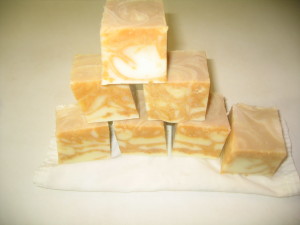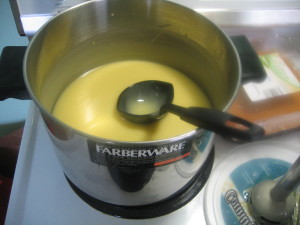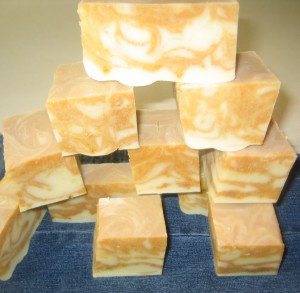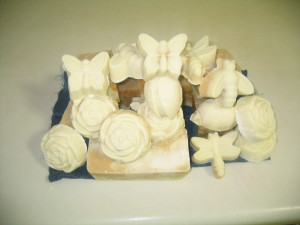Just new in soap making? There are reasons you should cold process your lye soap.
Lye soaps are generally made with oils, water, and sodium hydroxide.
Oils:Although you can make your soap using only one type of oil, generally, lye soaps are made with 3 types of oils including olive oil or any other liquid oil, coconut oil or palm kernel oil for lather and cleansing, and palm oil, tallow beef, or lard for creaminess and hardness. Oils accessible locally are generally used. However, with the development of technology and e commerce, soap makers can include any oil in their soaps whether locally accessible or not.
Water: Distilled water or rain water is best suitable making lye soap. Tap water is full of minerals and should be used when making lye solution.
Lye: For hard bar, Sodium Hydroxide (Na OH) is used. In solid form it is called sodium hydroxide. When added to water, it is generally referred it to as lye or lye solution. It may be hard to find at the grocery store this days. Hardware store carry Drano for cleaning clogged pipe. Lye sold in hardware for unclogging pipe could contains additional ingredients not needed in soap making. Food grade lye is available online. They offer discount when buying in bulk. But don’t buy a lot at once. They can clump up when not used for an extent period of time. Remember, lye or Sodium Hydroxide is caustic. When making soap, do not leave lye solution unattended especially if you have young kids or pets in the house. Store Sodium Hydroxide in a box and label the box using eye catching marker color to let adult in the house not to move it without caution. Do not leave it where pets can get to it either. When spill on the floor, wear gloves and use a solution of vinegar and water to mop your floor and to neutralize it. Always when making you lye solution, add lye to water not the other way around or you might produce a volcano reaction in your kitchen.
Safety equipment: Safety equipment is needed when making lye soap to avoid injury due to spill or splash. Wear safety goggles, gloves, long sleeves clothes, pants, and shoes. Have vinegar on hand or vinegar -water solution on hand. It neutralize lye and minimize the damage. Your soap area is not kid friendly zone so get them out of the way until your soap is poured in the mold, and the mold out their reach. Lye solution should not be cooled down in the fridge or left unattended for, a house member could spill it or drink it.
Equipment
Although you can make lye soap using your kitchen items, there are some equipment that should be exclusively dedicated for soap making.
Scale: You need a scale to accurately measure your ingredients. It is better to have extra oils in your soap than lye. However, too much oil would reduce the soap shelve life. It is helpful to writ down the ingredients and their weigh from the start. As items are weighted and added to the pan, mark the sheet or write the new weigh with different from the plan to avoid missing an ingredient. Additionally, recalculate the amount of lye required based on the ingredients new weight to avoid having lye left in the final soap.
Thermometer: Two are better. One for the lye solution and one for the oils to get them at the right range temperature before mixing them together.
Hand blender: Although not necessary, it precipitates the process. It is better to have one only for soap making.
Stainless steel pot: Do not make soap in an aluminum pot. The lye would eat it. The deeper the pot, the better. If you are on the budget and do not have a deep stainless steel pot, melt your oils in regular pot and pour in a solid plastic bucket sold at cleaning section at the grocery store. make sure it is “5”in the triangle. At the bottom of the bucket there should be a number in a triangle. It tells you what the plastic is made off. However, if you are cutting down on plastic in your house as I am trying to, then just invest in 8 QT stainless steel pan. It can make up to 6 lbs of soap with room to avoid spatter. But it is not suited for 1 lb soap batch. A pot should be kept only for soap to avoid food residue and food burn in the soap.
Stainless steel whisk, wood spatula, towels, measurement cups, bowls…
Molds: Anything can be use for mold. The choice is endless. I once used my fried chicken bucket to make round soap block and cut it into triangle soap bars. I just washed it well and let it dry. Milk cartoon, oat meal cylindrical box, shoes box, shipping box, plastic container… can be used when on tight budget or when recycling or buy silicone mold, wooden mold or even make your own wood mold. Carton boxes should line with plastic except the non porous ones like milk cartoons.
Make Me Feel Special Soap Bar
Ingredients:
Organic Extra Virgin Olive Oil—28 oz
Organic Extra Virgin Coconut Oil–20.80 oz
Tallow Beef—24 oz
Unrefined Shea Butter–4 oz
Organic Cocoa Butter–3.20 oz
Total Oil–80 oz
Distilled Water–30.40 oz
Food Grade Sodium Hydroxide–11.58 oz
Goat Milk Powder–4.05 oz
Local Raw Honey–1.90 oz
Whole Wheat Infant Cereal–0.90 oz
Lye discount 5% —INS 160
For lye calculation, a lye calculator can be used.
Preparation
Measure the lye. Measure the water. Set the water cup near a window or on the stove with the fan on, or outside. Lye steam or fume is irritating to throat. Therefore, do not breath it. Stir every few minute to avoid clumps at the bottom of the cup.
Weight coconut oil and tallow beef and melt them on low heat until almost melted. Turn the heat off and let the oils melt throughout. Let the measured shea butter and cocoa butter melt in hot water. Divide them in three bowls.
When both the lye and the mix of coconut and tallow beef are between 80 and 100degree Fahrenheit, pour the lye solution in the oil. Use a whisk to stir for about 5minutes. Use your hand blender to blender for 30 sec every 3minutes. Alternate with the whisk.
The lye-oils mixture should start changing color and becoming more opaque.
Prepare your mold. line your mold with a thick plastic unless it is silicone mold. Add the dry milk to one of the shea – cocoa butter, wheat to the second one, and the honey to the third bowl. Stir to mix well. Set them aside. Stir your soap. As it starts to thicken up watch for medium trace. Lye soap is said to trace when stirring it leaves a wave on top of the soap for few second before it disappears. At medium trace, as you lift your whisk, the drip will stay on top of the soap or leave in a dent for few seconds as it sinks in. At that point the soap is ready to be poured in the mold. Pouring soap in the mold at medium trace reduce the chance of the soap separating in the mold.
Add few spoonful of soap base to each of the three bowls that contains milk, honey, and whole wheat mixture. Mix well.
Pour one third of the soap base in the mold. Add one third of the wheat mixture, following by the milk, and the honey. Add another third of the soap and process the same way until everything is poured in the mold. With the handle of a wooden spoon do swirl. Shake the mold to release possible air bubble and even the top.
Cover the mold with its cover and let it undisturbed for 24hrs. You can pick every few hours as desired to watch the soap go through the gel phase. As for the soapy pan and utensils, they can be left for a week before cleaning. The residue will turn into soap and use to clean the pan. However, if you try to wash them after pouring the soap in the mold, the pan will be very oily. After 24 hrs, the soap should be hard enough to be removed from the pan and cut into bars. Let the bars cure for a month on a stainless steel rack or a carton box. Store in box to allow them to breathe.




